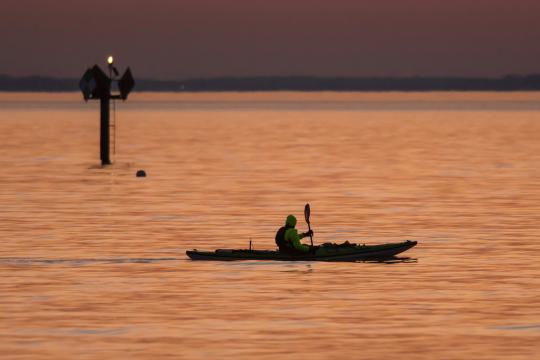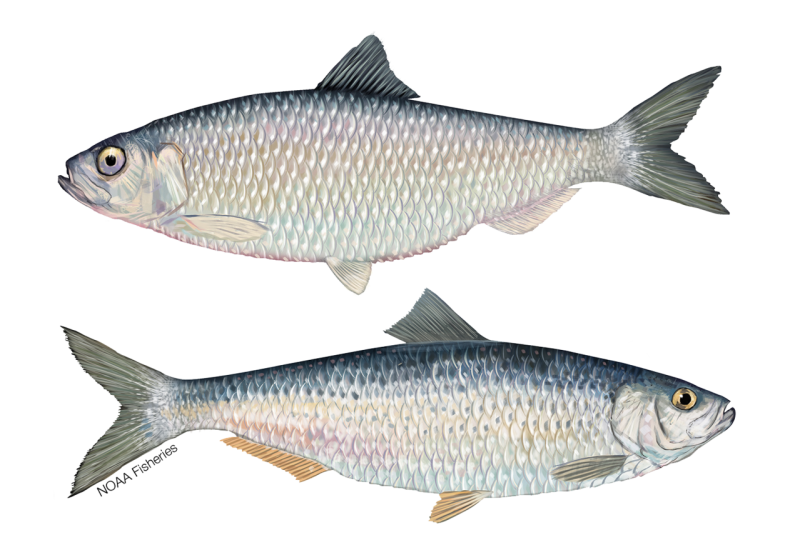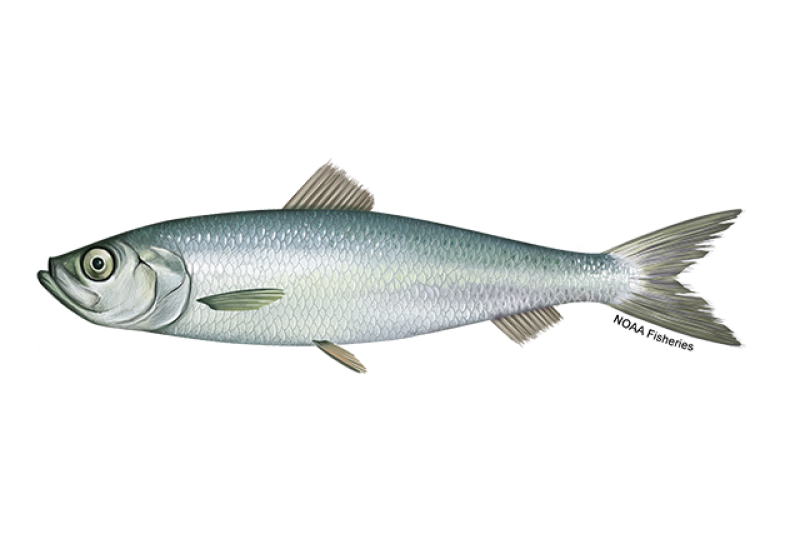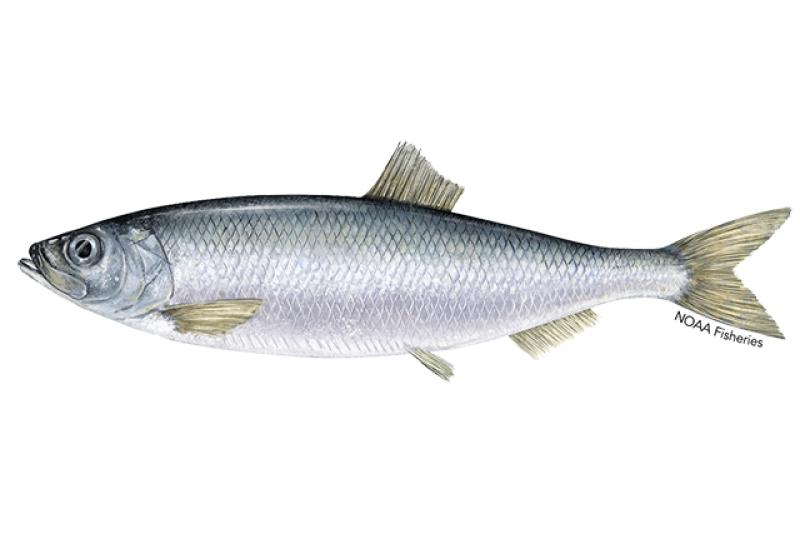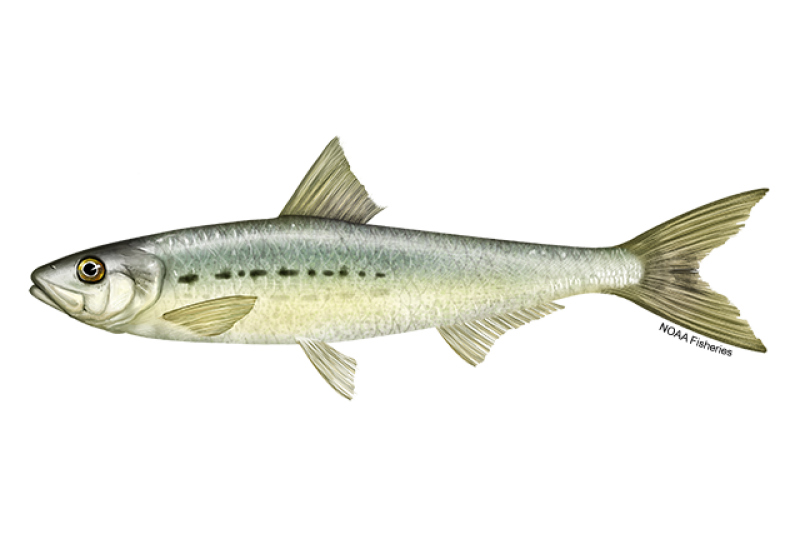Atlantic Menhaden
Brevoortia tyrannus

Quick Facts
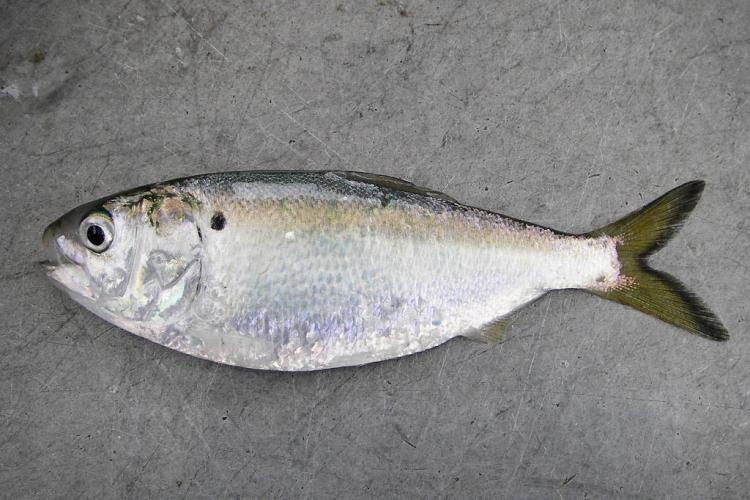
About the Species

Found in coastal and estuarine waters from Nova Scotia to northern Florida, Atlantic menhaden play many important roles. They are filter feeders, primarily consuming phytoplankton and zooplankton in the water column. Menhaden support an important commercial fishery. They constitute the largest landings, by volume, along the Atlantic Coast of the United States. Menhaden are harvested for use as fertilizers, animal feed, and bait for fisheries including blue crab and lobster. They are a major source of omega-3 fatty acids, so they are also used to develop human and animal supplements. In estuaries like the Chesapeake Bay, they are food for striped bass and other fish, as well as for predatory birds, including osprey and eagles.
Population Status
- The most recent stock assessment was accepted by the Atlantic States Marine Fisheries Commission in February 2020. The assessment says that Atlantic menhaden are not overfished and that overfishing is not occurring.
Appearance
- Menhaden are silvery in color with a distinct black shoulder spot behind their gill opening.
Biology
- Menhaden can live to be 10 to 12 years old and reach 15 inches in length. Fully grown, they weigh about a pound.
- Menhaden eat both phytoplankton and zooplankton. When they are well-fed, they are referred to as fatbacks or bunkers.
- Mature menhaden spawn in coastal waters off the East Coast of the United States. The peak of their spawning season is thought to be from December to February.
- Menhaden larvae drift into estuarine environments and metamorphosize into juveniles. The juveniles tend to stay in the estuarine environments—like the Chesapeake Bay and Delaware Bay—for approximately a year before leaving the estuary to join adult schools.
- While many menhaden are migratory, others do not migrate and stay resident in their area.
Where They Live
- Menhaden live in coastal and estuarine waters from Nova Scotia to northern Florida.
- In the Chesapeake Bay, menhaden are common in all salinities. They swim in large schools close to the water's surface during the spring, summer, and fall.
Fishery Management
- The Atlantic menhaden fishery is managed by the Atlantic States Marine Fisheries Commission's (ASMFC) Atlantic Menhaden Management Board.
- Atlantic menhaden stock assessments and management are currently focused on implementing ecological reference points. These are fishing targets based on the availability of menhaden as prey for other important fishery species, including striped bass, weakfish, bluefish, and spiny dogfish, while also accounting for other prey species, such as Atlantic herring.
Scientific Classification
| Kingdom | Animalia | Phylum | Chordata | Class | Actinopterygii | Order | Clupeiformes | Family | Clupeidae | Genus | Brevoortia | Species | tyrannus |
|---|
Last updated by NOAA Fisheries on 01/31/2023
Featured News
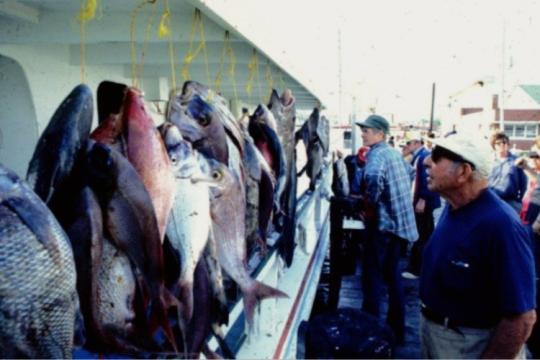 The catch from a headboat during the early days of the survey. Credit: NOAA Fisheries
The catch from a headboat during the early days of the survey. Credit: NOAA Fisheries
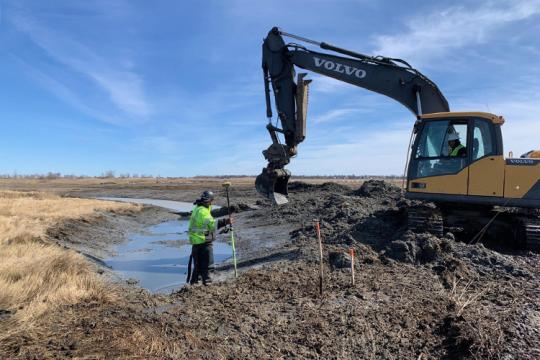 Creek construction to restore normal tidal flow in and out of Great Meadows Marsh. Credit: NOAA Fisheries/Jim Turek.
Creek construction to restore normal tidal flow in and out of Great Meadows Marsh. Credit: NOAA Fisheries/Jim Turek.
Related Species
Recreational Fishing Regulations
Last updated by NOAA Fisheries on 01/31/2023
Commercial Fishing Regulations
Regulations for the menhaden fishery are set by the Atlantic States Marine Fisheries Commission.
Commercial Gear Information
Atlantic menhaden are primarily caught via purse seine. The purse seine is highly effective and has little to no effect on habitat.
The bait fishery uses purse seines, pound nets, and other gears to capture menhaden.
The reduction industry, which harvests fish to produce fish meal and fish oil, began in New England in the 1800s. The bait fishery has been growing since 1985 and now makes up about one quarter of the menhaden harvested along the Atlantic coast.
The menhaden fishery is one of the most selective, and effective fisheries, with little bycatch. Atlantic croaker is the principal species caught as bycatch; the incidence is considered insignificant.
Menhaden aquaculture is nonexistent, but menhaden products are used in aquaculture of other fish. Reduction of menhaden yields three products: fish meal, fish oil, and fish solubles. The fish aquaculture industry depends heavily on fish meal to improve feed efficiency and produce maximum growth rates. Crude fish oil is used in foreign aquaculture, while refined fish oils are used as a nutrition supplement for people. Fish solubles are used to fortify fish meal and increase nutrition in the aquaculture industry.
Last updated by NOAA Fisheries on 01/31/2023
Subsistence Fishing Regulations
Last updated by NOAA Fisheries on 01/31/2023
Seafood Facts

Last updated by NOAA Fisheries on 01/31/2023
Seafood News
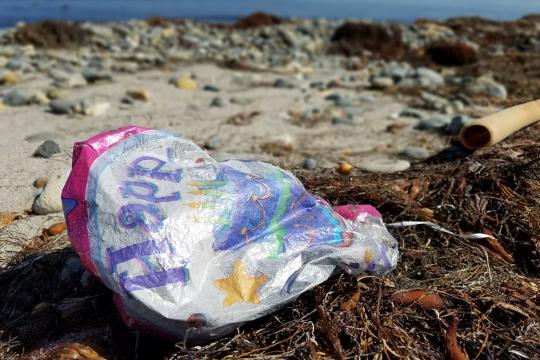 A Mylar balloon on the shoreline of Santa Rosa Island off the coast of California. Credit: Courtesy of NOAA Marine Debris Program
A Mylar balloon on the shoreline of Santa Rosa Island off the coast of California. Credit: Courtesy of NOAA Marine Debris Program
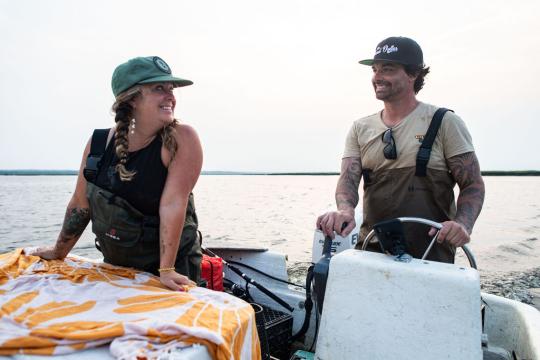 Photo credit: Christine Hochkeppel, christinehochkeppel.com
Photo credit: Christine Hochkeppel, christinehochkeppel.com
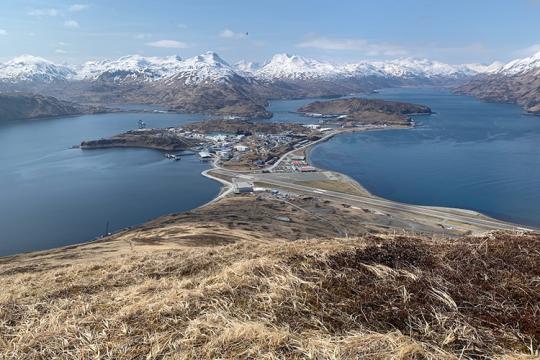 Port of Dutch Harbor and the village of Unalaska in the Aleutian Chain on the edge of the southeastern Bering Sea. Dutch Harbor the largest fishing port by volume in the U.S. Credit: NOAA Fisheries/Paul Hillman.
Port of Dutch Harbor and the village of Unalaska in the Aleutian Chain on the edge of the southeastern Bering Sea. Dutch Harbor the largest fishing port by volume in the U.S. Credit: NOAA Fisheries/Paul Hillman.
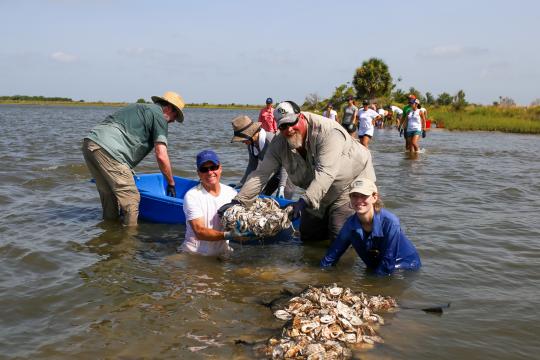 Volunteers build an oyster reef from recycled oyster shells (Photo: Galveston Bay Foundation)
Volunteers build an oyster reef from recycled oyster shells (Photo: Galveston Bay Foundation)
Last updated by NOAA Fisheries on 01/31/2023
Management Overview
The Atlantic menhaden fishery is managed by the Atlantic States Marine Fisheries Commission's (ASMFC) Atlantic Menhaden Management Board, which tracks and regulates harvest under Amendment 3 to the Interstate Fishery Management Plan (PDF, 112 pages).
Regulatory History
ASMFC allocates a coastwide total allowable catch to each jurisdiction that manages menhaden. Jurisdictions include each state, as well as the Potomac River Fisheries Commission. A cap to limit harvest in the Chesapeake Bay was instituted in 2006 and was moved to a lower level in 2017. In 2019, it was determined that Virginia was not in compliance with the Interstate Fishery Management Plan as it had failed to implement or enforce the Bay cap. To bring Virginia into compliance with the ASMFC plan, the Virginia Marine Resources Commission updated the harvest cap for the Commonwealth of Virginia. That action avoids a shutdown of the menhaden fishery there.
More Information
Last updated by NOAA Fisheries on 01/31/2023
Science Overview
NOAA's Southeast Fisheries Science Center conducts menhaden stock assessments and research to inform management decisions. We monitor and sample the commercial fisheries for Atlantic, Gulf of Mexico, and Chesapeake Bay menhaden. Vessel, gear, and biological data—including fish length, age, and weight—are collected. The work involves understanding critical life history characteristics and the effects of harvest, environmental variability, and natural mortality on population dynamics.
Last updated by NOAA Fisheries on 01/31/2023
Documents
Ecosystem-Based Fisheries Management Case Studies
Three case studies highlighting ecosystem-based fisheries management implementation.
Last updated by NOAA Fisheries on 01/31/2023
